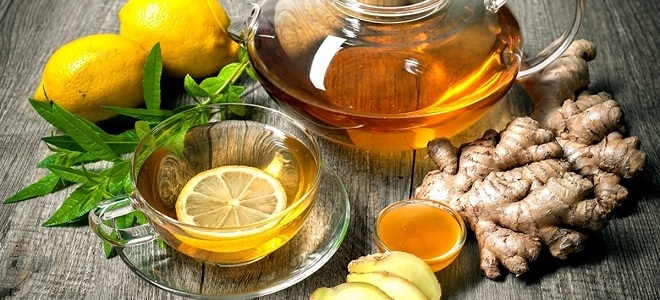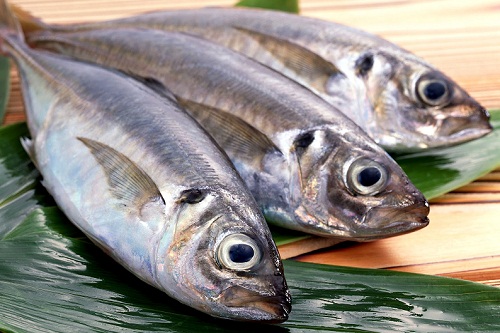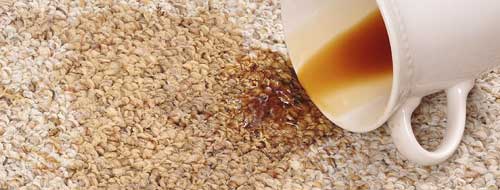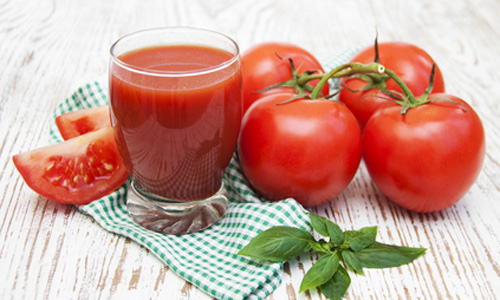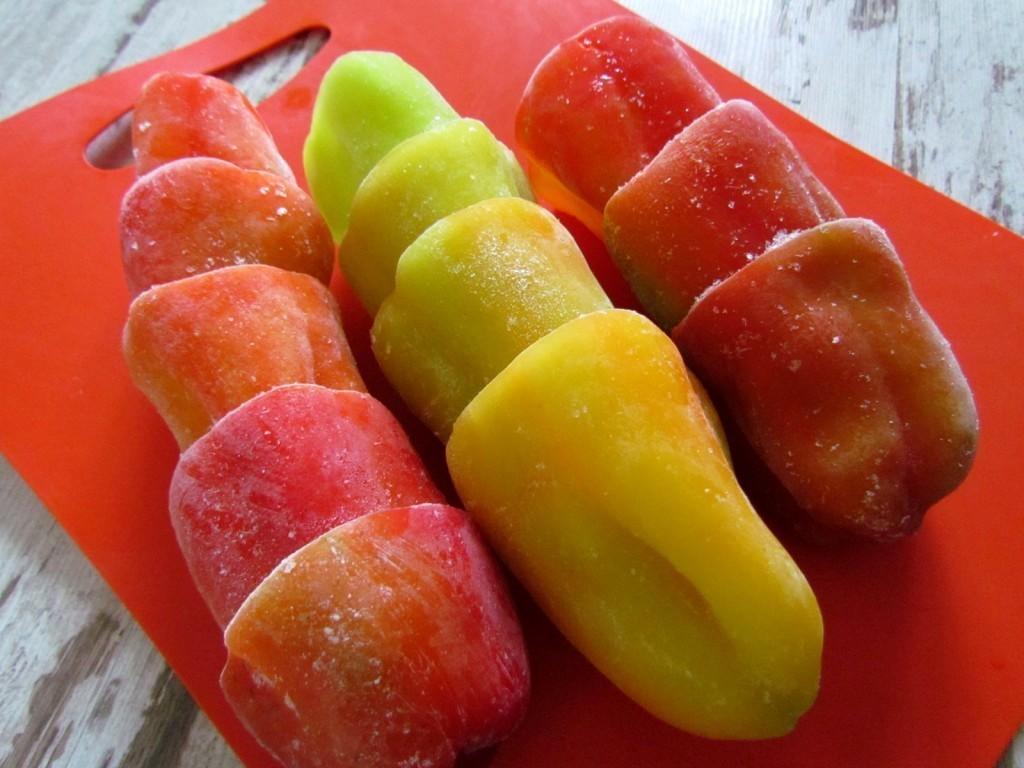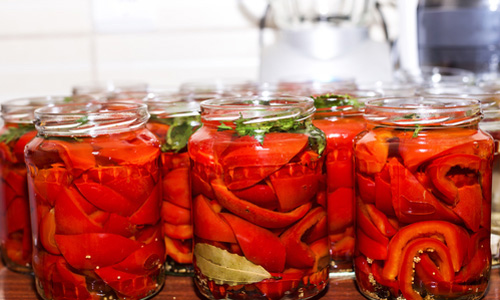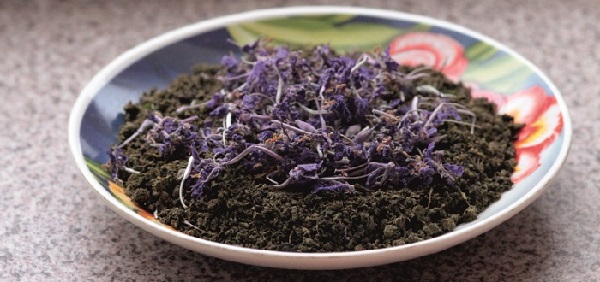Capers - how to grow, home care, reproduction. What are capers and how can they be replaced
These flowers bloom for only a few hours, and their characteristic mustard-pepper taste is loved by the inhabitants of the Mediterranean countries. In our country, capers are not very popular, although they are a great addition to many dishes and have many healing properties.
Prickly caper is a plant that survives even in the most extreme conditions. Often grows on rocks and steep walls, and the roots of the bush are able to penetrate deep into the soil up to 10 meters. Delicate white or pink flowers bloom for only a few hours, so their buds should be picked up very quickly, usually in the early morning. Then they are pickled in vinegar, oil, in saline or just salt, and then they become one of the favorite products of the Mediterranean cuisine.
A bit of history
But not the Greeks or Italians discovered the properties of capers. Probably their homeland is Central Asia and the Middle East. From the discovered documents it follows that they were already eaten by the inhabitants of Ancient Mesopotamia. Together with the Arabian caravans, capers came to the Apennine peninsula and Iber, and then they captured the whole region of the Mediterranean. Probably, already in the 13-14 centuries, merchants from Genoa, Florence and Venice brought them to other parts of Europe. Of course, only rich gourmets could afford pickled buds of exotic flowers. But from the archives it follows that, at least until the 18th century, capers were quite popular among our ancestors. In the following centuries, they disappeared from our tables, and only in recent years have we begun to rediscover the benefits and value of this delicacy, which is associated with the fashion for Mediterranean cuisine.

What is hidden in the capers: composition
Capers are about 85 percent water, but the remaining 15 percent are a container of valuable components. You can find many vitamins in them, especially A and C.
The most important component of capers is routine - An organic chemical compound from the group of flavonoids that condenses and strengthens blood vessels. In addition, it facilitates the absorption of valuable substances and slows down the oxidation of vitamin C, thereby prolonging its action.
Pickled buds also contain a lot of saponin (substances with diuretic and expectorant properties, enhancing the secretion of mucus, accelerating the metabolism of heat) and mineral salts.
It is not surprising that for centuries, capers were considered a product with healing properties. They improve the functioning of the gastrointestinal tract and liver, can reduce bloating, and also have anti-inflammatory effects. They were once known as a powerful aphrodisiac and an effective remedy for men suffering from impotence.

Capers in cooking
Capers have a specific, tart, bitter, sour taste, in which some recognize the aroma of pepper, while others recognize mustard or horseradish. Due to this, they are an indispensable addition to many dishes of Mediterranean cuisine, add expressiveness to them. Enrich the virtues of poultry, fish, pasta, seafood and pizza dishes.
Capers go well with tomatoes, as well as with well-known (the main components are mustard, mayonnaise, chopped gherkins and capers) and appetizers (olives, olives, sun-dried tomatoes, anchovies, capers, olive oil).
In Spain, a popular supplement, especially for fish dishes, is a paste of crushed capers, almonds, garlic and parsley. Pickled buds love the company of olives, peppers, other spices, especially oregano, mustard, basil, garlic and tarragon. May be delicious with cheeses, especially with mold. They should also be combined with boiled vegetables, such as asparagus beans.
Capers improve the taste of marinades, cottage cheese pastas or salads with herring. They decorate vegetable and meat aspic. It should be remembered that capers lose their unique flavor when exposed to temperature. Therefore, they should be added at the end of cooking, and even better - in cold dishes.

What are capers and what do they eat with? Many have heard, but not many know, although they are often found in recipes for various dishes. Before it was almost impossible to meet them on sale, and savvy housewives boldly replaced them with pickles. But now on the shelves of large supermarkets there are a row of beautiful jars.
However, our compatriots do not seek to buy a jar of balls of dark olive color. And all because they have no idea how tasty and healthy the product is, and how to use it in cooking.
Let's debunk the mysterious areola of capers, find out how they look, where they grow, where they can be added to dishes and how to replace them.
Capers - what is it
Capers - buds that have not yet opened up are thorny shrubs called capers. The very name of the buds is capers, you can translate “passion” and “desire”.
The plant blooms from May to September, the fruits of the capers ripen in early June, but the harvesting period lasts until October - the flowering period is so stretched.
It is noteworthy: the buds are collected only by hand, but even the most experienced collector is able to collect less than a kilogram in a couple of hours. From a young shrub per year, you can collect up to 3 kg. capers, and an adult gives no more than 5 kilograms.
The collected buds are slightly wilted in the fresh air, then sent to salt or pickle. Capers are usually salted in olive oil, marinated in wine vinegar, aged in the marinade for three months. And only then are the capers ready for use.
Interesting! The most expensive and delicious are considered small Provencal capers, measuring only 1 - 3 mm, they are called nonparel.
The taste of capers:
Salted and pickled buds have a specific, refined taste, spicy, tart, slightly sour and slightly mustard.
Gourmets believe that salted capers are superior to pickled ones in taste.
Caloric value of capers:
A low-calorie product that can safely be called dietary. In 100 gr. buds contains only 14 kcal.
How to replace capers:
The price of a jar of capers is quite high, and it’s not always possible to find a product, in this case the question arises of what can be taken for a replacement. There is an alternative, from the video you will find out.
Capers - photo, description
Where does caper grow? We call the shrub caper, kaportse, with an emphasis on the first syllable. The shrub is quite tall, up to 2 meters, creeping and terribly prickly.
The shrub is extremely hardy and unpretentious, grows freely on bare stones. It blooms in summer, snow-white and large flowers. Look at the photo.

In the countries of the Mediterranean and Asia, the shrub is attributed to landscape plants. A large number of shrubs grow on the Italian island of Cyprus, and, they say, the name of the plant comes from the Greek name - Cyprus.
They know him in Turkey, in the Mediterranean countries. There, the bush is cultivated with the aim of obtaining buds for nutrition, since the product is most in demand in the cuisine of countries. It grows in our country in the Crimea and the Caucasus.
The shrub has several hundred species, but people use only one for food - prickly caper.
People harvest not only unopened buds, some parts of the bush have long been used by people in the treatment of diseases: the ends of shoots with young leaves and unripe berries, as well as roots.

What do capers eat?
Our ancestors knew where to add capers to food and what they eat with - information on the use of the product appears in old cookbooks. It is worth noting that only salted or pickled capers were used, since fresh ones do not differ in pleasant taste, having a specific bitterness.
- Pickled and salted capers will give your dish a spicy, spicy taste, a little astringency, acidity and pungency.
- In the national cuisine of some countries, capers are especially appreciated for these qualities, they are loved in Italy, Morocco, and are widely used in Greece and Turkey. Recently, the culinary specialists of our country have tasted and appreciated delicious buds and began to put them in different dishes, highlighting the main taste and giving a new, interesting note.
- Most often, small canned buds are added to fish dishes. For example, recently I wrote about a traditional Russian dish - where capers have long taken their place of honor (do not be lazy, get acquainted with the recipes).
- Culinary masters put lightly salted and pickled capers into pizza, prepare delicious salads with tuna, chicken, pasta.
- The buds have found great application in the preparation of sauces. For example, the famous tartar sauce is impossible to imagine without small spicy buds.
- From fresh capers I make an unusual oil to taste and season salads with it. And in Greece it is used as a starter in the preparation of cheese.
- Served as a spice for smoked meats, sometimes served as a separate appetizer for meat. Often in cocktails with martini instead of traditional olives, you can find capers.
Caper Recipes
If you want to know the taste of real pickled capers, make the pickled buds yourself. They will only win, because in industrial conditions, only vinegar is used in the marinade, depriving capers of traditional taste and aroma. The homemade ones turn out much tastier, because you add everything that is supposed to be in the marinade.
Pickled capers - recipe
- Take a jar of capers, olive oil and a few spices: rosemary, oregano and thyme.
- Warm the butter by adding spices in a water bath.
- Add the capers from the jar to it. Be sure to drain and rinse them a little.
- Pickle for 2-3 days.

Tuna salad with capers
I offer a small salad recipe with capers and tuna - the most common recipe in the Mediterranean.
- Take a can of tuna, a small onion, a bunch of arugula, 100 gr. Parmesan Cheese.
- Grind, season with capers, olive oil, sprinkle with balsamic vinegar and pepper.
Some tips for using marquesowls in cooking
Ideally, it is better to store capers directly in the marinade, and salted, of course - in brine.
- Most essential oils and vitamins will not break down if you add spiced buds at the very end of the preparation.
- When buying, choose jars with small buds, not more than 6 mm, they are tastier and richer in vitamins.
- Do not overdo it, put the product strictly according to the recipe, otherwise bloating, and sometimes vomiting, will be provided.
- First put the buds in the dish, and only then, after tasting the dish, salt. Sometimes there is no need for salting.

Capers - Health Benefits
Since Bible times, the health benefits of caper have been known. He has always been associated with youth and fullness of life. People used flowers, small fruits, leaves and roots in the treatment of various diseases. Absolutely all parts of the plant have a powerful astringent, antiseptic and analgesic effect.
- From historical documents, information reached us that the ancient Greeks knew about the benefits of capers in the treatment of joints. And in cooking they used to avoid flatulence.
- In the Caucasus, flowers and fruits of capers have long been used to heal rheumatism, and in Central Asia they treat thyroid gland - it turned out that there is a lot of iodine in the fruits of the bush. If you are lucky and a bush is growing in your area, follow their example to replenish stocks of a trace mineral important for health. Dilute fresh fruit juice with water and drink throughout the day.
- A decoction is prepared from the roots of the shrub, which helps with the disease of the spleen and kidneys.
- Headache - just chew fresh caper seeds. Ill, God forbid, a tooth - attach leaflets to a sore spot.
- Leaflets and flowers were used in the treatment of heart and early wound healing.
- Pound the shoots of capers with garlic, and you will fight with skin and fungal diseases.
- Eat a few caper buds before meals, and your sleep will be strong like a baby, and your appetite will be pleased.
Unfortunately, the chemical composition of the shrub has not been adequately studied. But it is known that the main active substance in it is rutin, which effectively reduces high blood pressure.
- Quarcetin - flavonol, which effectively affects the DNA structure, instantly removes inflammation and neutralizes allergic reactions in the body, will protect you from serious skin and cancer diseases. Moreover, quercetin in the fruits of caper is much more than, for example, in apples and raspberries.
- In capers you will find vitamins C, A, P, PP. The constant components of capers are fiber, healthy fats, and proteins. The seeds of the plant contain essential oils, natural manganese, magnesium, iron, calcium.
- In fairness, I must say: a beautiful plant has one significant drawback - it has a lot of sodium, in large quantities it is not always useful. You can fix the problems if you soak fresh capers in water and olive oil for a short while.
Cooking with capers is very curious, friends, because sometimes many dishes, just add a few buds, open from a new angle, thanks to the unique taste of capers. I found a video: what are capers and what they eat with, be sure to look. With love ... Galina Nekrasova.
The useful properties of capers have long been known: the ancient Greeks exported them two thousand years ago. Nowadays, this product, rich in fiber, proteins, fats, vitamins, is actively used in cooking. They remind peas to someone, but in reality they are plant buds. Even a small amount of them makes food tastier.
What are capers
Caper is the flower bud of the caper plant, whose homeland is Asia and Africa. Now it is grown in France, Spain, Italy, Greece, Algeria. How do capers grow? The shrub is unpretentious, freely develops on bare stones and rocks. Unblown flower buds are picked by hand and used in cooking. Sizes can be any, it affects the degree of maturity. The larger the buds, the higher their value and usefulness, the tastier they are. They are almost never eaten fresh, but canned with salt and vinegar.
What do capers taste like
Now a can of pickled capers can be easily bought at the supermarket to diversify your favorite dishes and create new ones. What capers taste and how to relate to them? They are not only good in the photo, but also piquant, sharp, tart, they are distinguished by pleasant sourness and bitterness - because of the mustard oil in the composition. Use pickled or canned, apply, sometimes pre-soaked or doused with boiling water to remove excess salt and not cause harm to health.
Capers Recipes
Capers are widely spread in the culinary of different countries. Spicy spicy sauces are prepared from them, added to salads, soups, hot dishes, served as spices for meat. Often, salted buds or spicy marinade are added to familiar foods to give them a specific flavor. They even use oil - for dressing with hints of astringency, pungency and acidity. This product in the nearest stores is mainly sold not in natural juice, but pickled, with a lot of vinegar and salt. Good chefs achieve high quality dishes even with this ingredient.
Caper salad
How to cook a delicious salad with chicken? The recipe will win if you don’t cook the tender chicken breast, but grill it or bake it. The products will need to be divided into pieces, put in a salad bowl, greased with mayonnaise. Onion rings (you need to take sweet) will have to be distributed as thinly as possible, and only then smeared with mayonnaise. An important touch - on top of the salad should be sprinkled with pickled Mediterranean buds, garnish with fresh herbs. There is an option how to cook a salad with fresh vegetables (per 1 eater).
Ingredients:
- boiled chicken breast - 100 g;
- cucumbers - 50 g;
- tomatoes - 50 g;
- bulgarian pepper - 50 g;
- capers - 50 g;
- white wine - 1 glass.
Cooking method:
- Pour breast and sweet pepper with white wine for 10 hours.
- Cut chicken, cucumbers, tomatoes, peppers into small pieces.
- Cover the dish with a lettuce leaf, put layers on it: vegetable, then meat, at the end - capers.
- Pour marinade over chicken salad.

Caper sauce
A delicious sauce is very good for meat, fish and salads - complex and simple. It is prepared simply, it looks beautiful, it turns out appetizing, but you need to get used to its piquant taste. There are many options how to prepare such a dressing for every taste. Step-by-step recipes with a description of each stage and photo will not let you make a mistake. However, first you need to master the classic version.
Ingredients:
- garlic - 2 cloves;
- egg yolk - 1 pc.;
- olive oil - 150 ml;
- mustard (better Dijon) - 1 tsp;
- anchovies - 4 pcs.;
- worcestershire sauce - 1 tsp;
- lemon juice - 1 tbsp. l .;
- grated parmesan - 50 g;
- salt, black pepper.
Cooking method:
- Mix the yolk, mustard, beat. Salt, whisk more;
- Introduce a drop of olive oil, thoroughly mixing with a spoon, so that the consistency resembles mayonnaise;
- Crush anchovies, add lemon, Worcestershire sauce to them;
- Shuffle the components;
- Add chopped garlic and cheese to the mixture;
- Beat the sauce. You can pour Caesar salad on it.

It is worth preparing a separate gravy boat so that guests themselves add an unusual, new or unexpected ingredient to their plates. Caesar sauce with capers and anchovies is seasoned with salad of the same name. Few people know about capers - what it is and how the dish changes. A delicious sauce (additive) can be made according to such a recipe, which is given below.
Ingredients:
- raw yolk - 1;
- capers - 1 tbsp. l .;
- anchovies - 2-3 pieces;
- garlic - 1 clove;
- mustard - 2 tsp;
- vegetable and olive oil - half a cup each.
Cooking method:
- Mix the yolk thoroughly with chopped garlic, anchovies, capers, beat until completely uniform;
- Add mustard, mix thoroughly.
- Mix two types of oil, pour the mixture in a thin stream. Stir constantly.
- Insist 15 minutes.

Solyanka with capers
The meat hodgepodge is especially tasty - it is a thick, rich soup, appropriate in the cold winter months. The name "peasant" is also used - as a type of food for rural residents prepared from the remains of various products. Now the hodgepodge is served in the best restaurants, it is cooked in any home. A dish requires a solid set of quality products, several varieties of meat, deli meats, sausages. There are many recipes with photos of this soup, one of them is a combined hodgepodge with capers.
Ingredients
- beef on the bone - 600 g,
- smoked sausage - 50 g,
- boiled pork, smoked ham, boiled sausage - 200 g each,
- pickles - 300 g;
- capers - 30 g
- lemon - 1 pc.;
- celery, carrots - 1 pc.;
- pitted olives - 50 g;
- onions - 2 pcs.;
- tomato puree - 200 g;
- vegetable oil - 20 g;
- sour cream - 50 g;
- pepper, bay leaf, salt;
- parsley.
Cooking method:
- Cook the beef broth, at the end add carrots, celery, onion. Remove vegetables with meat when tender.
- Fry chopped onions, add chopped or grated cucumbers to it, simmer for 10 minutes.
- Combine dressing with tomato, boil, pour into the broth.
- Boiled beef, boiled pork, sausage, ham cut into pieces, put in soup.
- Lower capers, olives, lavrushka, salt, boil, leave for half an hour.
- Garnish the soup with lemon slices, herbs, sour cream.

Pasta with capers
Italian cuisine has opened pasta for us. There are many recipes for its preparation, since variations with sauces, dressings, additives make each dish unique. Combining all kinds of ingredients, you can achieve unusual taste sensations. Pasta with capers and tomatoes, flavored with a spicy aromatic sauce, is worth it to master at least one of the recipes - with baked tomatoes, garlic and olives.
Ingredients:
- tomatoes - 750 g;
- garlic - 2 cloves;
- capers - 3 tbsp. l .;
- olive oil - 2 tbsp. l .;
- salt, pepper - to taste;
- seedless olives - a third of a cup;
- pasta (pasta) - 350 g.
Cooking method:
- Stir the tomatoes, garlic, capers, salt, pepper, oil, bake on a baking sheet for 20 minutes at 220 degrees.
- Add the olives, cut in half, hold for another minutes at a lower temperature.
- Cook pasta, fold in a colander.
- Mix everything with sauce and spices, pour oil.

How to replace capers
From capers, food acquires a pleasant sourness and piquancy, but if the hostess failed to buy exotic buds, do not give up the dish. If you want to surprise gourmets, you can prepare in advance by pickling the unripe fruits of nasturtium or dandelion buds - they are similar in taste. Sometimes you need a simple option, than you can replace capers in sauces, fish, meat dishes, hodgepodge. Fit:
- olives with lemon juice;
- olives;
- pickled gherkins;
- in some cases even sour-sharp small cucumbers and green tomatoes are suitable.
Video: pasta with capers for sandwiches
(capers) is an important ingredient in the original Olivier salad. In a salad of the Soviet era, this mysterious product was replaced with pickles, as well as crayfish necks with boiled carrots, and grouse and tongues with chicken or doctor's sausage. Now capers have lost their halo of mystery, because you can easily buy them in stores. However, until now in Russia, salted green balls in jars are treated with caution - it is not clear what kind of fruit it is and what it is eaten with.
Actually, capers are not fruits at all, but unblown buds of prickly caper bush (Capparis spinosa). The homeland of the caper is the Mediterranean and Central Asia. There is a theory that the word "caper" comes from the Greek name for the island of Cyprus (Kipros), where these plants grow in abundance. Some species of capers grow in the Caucasus and in the Crimean rocks. The Armenian name for the caper is “kapar”, the Georgian name is “kapari”. These spiky plants are extremely hardy: they easily withstand the heat and salty sea spray and are able to grow on bare stones. The caper can be seen even on the famous Wailing Wall, where it grows, taking roots in the crevices of stone slabs and hanging shoots down a few meters. Cheerful and undemanding, caper blooms all summer, giving the nectar of its beautiful large white flowers to insects, and berries to birds.
 The first written mention of capers dates back to about 2700 BC. The fruits of the caper were mentioned in the oldest monument of literature - “The Epic of Gilgamesh”. Since ancient times, all parts of the caper have been used as a spice and medicine. A decoction of flowers of a caper was used to heal wounds, strengthen the heart; a decoction of the roots was used as an anesthetic; caper fruits (berries) helped with toothache and thyroid diseases; a decoction of the cortex was used for neurosis; caper seed oil was used for massage. Modern medicine recognizes that the fresh parts of the shrub have astringent, antiseptic and analgesic properties. A handful of capers before eating arouses appetite. Like all plants, capers are rich in vitamins, fiber, and organic acids. The buds contain about 25% protein and 3% fat; the fruits are rich in vitamin C and iodine; seeds contain up to 36% of oil. The absence of heat treatment preserves all the useful substances of capers in their original form.
The first written mention of capers dates back to about 2700 BC. The fruits of the caper were mentioned in the oldest monument of literature - “The Epic of Gilgamesh”. Since ancient times, all parts of the caper have been used as a spice and medicine. A decoction of flowers of a caper was used to heal wounds, strengthen the heart; a decoction of the roots was used as an anesthetic; caper fruits (berries) helped with toothache and thyroid diseases; a decoction of the cortex was used for neurosis; caper seed oil was used for massage. Modern medicine recognizes that the fresh parts of the shrub have astringent, antiseptic and analgesic properties. A handful of capers before eating arouses appetite. Like all plants, capers are rich in vitamins, fiber, and organic acids. The buds contain about 25% protein and 3% fat; the fruits are rich in vitamin C and iodine; seeds contain up to 36% of oil. The absence of heat treatment preserves all the useful substances of capers in their original form.
The main area of \u200b\u200bapplication for capers is cooking. They are noted in the oldest culinary book of the 1st century. BC, extant to our days. Fresh caper buds have an unpleasant bitter aftertaste that disappears only after a long treatment. Salty and pickled capers have a sharp, tart, sour, slightly mustard taste and give a pleasant spicy flavor to food. Cuisines of different nations include salted and pickled capers in fish and meat dishes to spice them up. In a sense, capers enhance the taste of a dish, like sodium glutamate. Capers are an integral part of many Mediterranean sauces and marinades. Viscous and aromatic oil from caper seeds decorates salads.
 In Russia, gourmets have to be content with pickled capers of factory production, which does not benefit the image of this product, because to increase the shelf life capers are pickled in vinegar without olive oil. To appreciate capers, try to “save” them with a new marinade. Harvest olive oil and warm it in a water bath with Italian herbs: rosemary, oregano, thyme, oregano. Pour vinegar marinade from the jar of capers, rinse the capers several times in cold water, dry and pour into a bowl of warm oil. When the capers have cooled, put them in the refrigerator for 2-3 days, after which you can enjoy their proper taste.
In Russia, gourmets have to be content with pickled capers of factory production, which does not benefit the image of this product, because to increase the shelf life capers are pickled in vinegar without olive oil. To appreciate capers, try to “save” them with a new marinade. Harvest olive oil and warm it in a water bath with Italian herbs: rosemary, oregano, thyme, oregano. Pour vinegar marinade from the jar of capers, rinse the capers several times in cold water, dry and pour into a bowl of warm oil. When the capers have cooled, put them in the refrigerator for 2-3 days, after which you can enjoy their proper taste.
In places of wild caper growth, it is harvested according to old family recipes. The process of turning wild caper buds into a delicacy is quite a long and time-consuming process, reminiscent of processing olives: small unblown buds are picked manually in the early morning, sorted using a sieve, dried in the sun and salted or pickled, following ancient recipes. For example, buds are poured with salted boiling water and kept in a solution of salt and vinegar, changing the marinade several times, or placed in a mixture of olive oil and salt. It takes at least 3 months for the capers to mature in a salty environment and acquire a dark green color and a dense texture. To pickle capers without marinade, they are placed in glass jars, sprinkled with salt, after which they give juice, dry and stored for years.
 Varietal capers are grown in Spain, Italy, France and North Africa. On the Italian island of Pantelleria, capers grow to have received the IGP brand name (protected geographical name). And capers from the island of Santorini are considered the best in taste, due to the high content of volcanic ash in the soil. The best varieties of capers compete with grapes for profitability, especially since the costs of growing capers are minimal, and about 3 kg of buds are collected from one plant per season. Dense small buds less than 1 cm long are best appreciated. The caper berries are sweet and juicy, resembling a watermelon. They are usually eaten fresh or made from them sweet jam. The ancient Greeks dried the fruits of capers to use them for sweetening dishes. In salty marinade, the taste and aroma of caper berries is too harsh. However, in France and England, even they find application. Young shoots and leaves of caper can be used in salads or pickled with buds. In places where caper grows, you can even try caper honey.
Varietal capers are grown in Spain, Italy, France and North Africa. On the Italian island of Pantelleria, capers grow to have received the IGP brand name (protected geographical name). And capers from the island of Santorini are considered the best in taste, due to the high content of volcanic ash in the soil. The best varieties of capers compete with grapes for profitability, especially since the costs of growing capers are minimal, and about 3 kg of buds are collected from one plant per season. Dense small buds less than 1 cm long are best appreciated. The caper berries are sweet and juicy, resembling a watermelon. They are usually eaten fresh or made from them sweet jam. The ancient Greeks dried the fruits of capers to use them for sweetening dishes. In salty marinade, the taste and aroma of caper berries is too harsh. However, in France and England, even they find application. Young shoots and leaves of caper can be used in salads or pickled with buds. In places where caper grows, you can even try caper honey.
 Capers are rarely used as a whole in cooking, usually they are ground with salt or herbs or finely chopped so that their strong salty taste is evenly distributed throughout the dish. To preserve the specific taste and aroma, add capers at the end of cooking. In small quantities, capers can be added to borscht and hodgepodge. In this case, salt is not required. Before drinking capers, it is recommended to rinse or soak in water to remove excess salt. Pickled capers should be stored in the marinade, removing them immediately before use. In this case, they can be stored in the refrigerator for up to 9 months. Salted dry capers can be stored at room temperature for six months. Capers are combined with many products, but if you do not want to experiment, here are a few win-win, time-tested combinations:
Capers are rarely used as a whole in cooking, usually they are ground with salt or herbs or finely chopped so that their strong salty taste is evenly distributed throughout the dish. To preserve the specific taste and aroma, add capers at the end of cooking. In small quantities, capers can be added to borscht and hodgepodge. In this case, salt is not required. Before drinking capers, it is recommended to rinse or soak in water to remove excess salt. Pickled capers should be stored in the marinade, removing them immediately before use. In this case, they can be stored in the refrigerator for up to 9 months. Salted dry capers can be stored at room temperature for six months. Capers are combined with many products, but if you do not want to experiment, here are a few win-win, time-tested combinations:
- with olive and butter,
- with mayonnaise
- with lamb, beef,
- with Chiken,
- with seafood,
- with salted and smoked fish, anchovies,
- with pickles
- with onion,
- with pasta
- with olives
- with tomatoes, sweet peppers,
- with celery
- with mozzarella, feta and feta cheese,
- with eggs
- with tarragon, parsley, dill.
 Capers can be replaced with immature pickled nasturtium pods. In the Middle Ages, the fruits of nasturtium were even called capers for the poor. When collecting wild capers or growing them in the garden for culinary purposes, make sure these are the buds of the Capparis spinosa plant. There are poisonous plants with buds that are very similar to capers, for example, euphorbia (Euphorbia lathyris).
Capers can be replaced with immature pickled nasturtium pods. In the Middle Ages, the fruits of nasturtium were even called capers for the poor. When collecting wild capers or growing them in the garden for culinary purposes, make sure these are the buds of the Capparis spinosa plant. There are poisonous plants with buds that are very similar to capers, for example, euphorbia (Euphorbia lathyris).
Capers Recipes
Ingredients:
100 g of rice
100 g pistachios
1 orange
50 g capers
olive oil,
fresh mint, basil to taste.
Cooking:
Cook rice in a small amount of water so that it does not stick together. Rinse the orange thoroughly and remove the zest with a grater, squeeze the juice into a separate container. Push the pistachios. Tear greens with your hands. Finely chop the capers. Mix everything and pour in the sauce of orange juice and olive oil.
Ingredients:
200-250 g of salty red fish,
1 bell pepper
1 can of capers
skewers for canapes.
Cooking:
Cut the fish into thin slices. Cut the pepper into cubes and wrap them in fish. Place a caper bud on top and fasten with a skewer.
Ingredients:
1 red bell pepper
1 tbsp olive oil,
2 cloves of garlic,
1 tbsp capers
1 tbsp the basilica.
Cooking:
Fry pepper strips in olive oil with crushed garlic. Remove, mix with capers and chopped basil. Serve with pasta or fish dishes.
Ingredients:
4-5 tomatoes
2-3 cloves of garlic,
1 tbsp capers
coriander, olive oil to taste.
Cooking:
Mix the pulp of tomatoes with crushed garlic and finely chopped capers. Sprinkle with coriander and pour olive oil.
Ingredients:
500 g mayonnaise
500 g sour cream
80-100 g of capers,
150-200 g of gherkins,
4 boiled yolks,
a bunch of fresh dill.
Cooking:
Peel the capers from the seeds and chop finely with the gherkins and dill. Beat sour cream, mayonnaise, yolks in a blender and half the capers, gherkins and dill. In the finished sauce, add the remaining capers, gherkins and dill, mix thoroughly.
Many have heard about such a plant as capers, used in cooking, but not everyone is personally acquainted with this interesting product that appeared with us not so long ago.
Here we will tell you in detail about unusual capers, what it is, what they look like, what their benefits are and whether there is harm, where they grow, how they are cooked, what they eat and how tasty they are. Around there are more and more recipes using this product, so every housewife who loves to cook should get to know more about the mysterious capers.
What are capers
The first question that people who are not familiar with caper ask is what is it, a vegetable, fruit, or root vegetable? In fact, this is not yet a blossoming bud of the herbaceous caper plant.
Africa is considered its homeland, and it is also widespread in Asia and the Mediterranean regions. The shrub is very unpretentious and in the wild grows in rocky terrain, in rocky and very barren soil.
To imagine how capers look, we can recall pistachios. In shape and size, these fruits are very similar.
Nowadays, the plant is widely cultivated in Spain, France, Greece, Italy.
The caper blooms for a long time - from May to early October. Collect buds manually at a time when they have not yet begun to blossom. Fresh they are not eaten - they are bitter and unpleasant in taste.
But after salting or pickling, capers get spicy, unusual, spicy notes and can be a great addition to many dishes. Not everyone likes the taste of these fruits, so one can say a hundred products for everybody.
The taste and beneficial properties of capers
Capers are delivered to our market in salted, pickled, canned form. The product can be attributed to spices.
Capers taste specific - they combine a weak bitterness, astringency, acidity, which turns into a peculiar piquant sensation. They acquire this property as a result of mustard oil, which is part of their composition. It is believed that salted capers have better taste properties than pickled ones.

The caper plant has been used in folk medicine since ancient times. The leaves, roots, flowers of this shrub were used to treat a wide variety of diseases. Today, there are quite a few useful properties that these small buds possess.
- The plant contains many vitamins and valuable minerals.
- Rutin, which is part of strengthens blood vessels and capillaries, improves blood circulation, prevents the formation of blood clots.
- Thanks to antioxidant properties, the plant rejuvenates the body, neutralizes toxins.
- Niacin contained in fruits lowers cholesterol and cleanses blood vessels.
- They improve intestinal function and speed up metabolism.
- Flavonol quercetin prevents the growth of cancer cells.
- Reduce blood sugar.
- Promote tissue regeneration, accelerate the healing of skin lesions.
- Decoctions of herbs help with diseases of the kidneys and urinary system.
- They have anti-inflammatory properties.
- They contain a lot of iodine and are useful for deficiency of this element.
- Help with rheumatism.
Of course, the benefits of capers are reduced after pickling or pickling, but the buds retain most of their vitamins.
Caper: harm and contraindications
With moderate consumption, the plant is considered safe. Experts still do not recommend using the product for pregnant and lactating women. With caution, it should be used by people with a stomach ulcer and acute gastritis. Allergy sufferers should also be careful when starting out with a small overseas delicacy.
It is worth noting that capers, the benefits and harms of which are individual for each organism, are related to food products, and not to medicinal ones.

How capers are used in cooking
You have learned in what form the product is delivered to our market, now we’ll figure out where the capers are added. Before applying the buds for cooking, they are washed well from brine or marinade.
What do capers eat?
- They are added to various sauces for meat and vegetable dishes.
- Used as an ingredient in salads.
- With seafood.
- With any meat.
- Add to soups.
- Used for cooking second courses.
- Used in some types of baking.
- Served with some alcoholic drinks.
Calories of capers - 14 kcal per 100 g
This product is especially popular in French and Italian cuisine. Capers eat pasta, add them to pizza, make spicy sauces for meat and fish dishes from them.
Salty buds are very well suited for making hodgepodge, and pickled buds are ideally combined with Russian cabbage soup. There are no strict rules on the use of the product in cooking. You can experiment yourself by adding fruits to a wide variety of dishes.
So, we figured out where and how capers grow, what taste they have, how they are useful, now we find out where to get the exotic product.
Pickled and salted buds are sold in most supermarkets in glass and tin cans. The volume of cans can be different, from 100 ml to 1 liter. A lot of companies are engaged in supply, so on the shelves of the stores you can see capers of various production.
How much are capers in our market? Price depends on volume and brand. On average, a 300 ml jar with overseas fruits costs 300 rubles.
 Where can I buy capers and how much do they cost
Where can I buy capers and how much do they cost How to replace capers
If you decide to cook a dish whose recipe includes these fruits, but you don’t have them at hand, that's okay. You can replace the product with pickled or pickled cucumbers or green tomatoes. Some culinary specialists suggest using olives as an alternative to capers.
Now you all know about capers, what they eat and what they eat. It remains only to go to the store and try unusual buds to taste. Especially good dishes with marinades and pickles go in the cold season.

